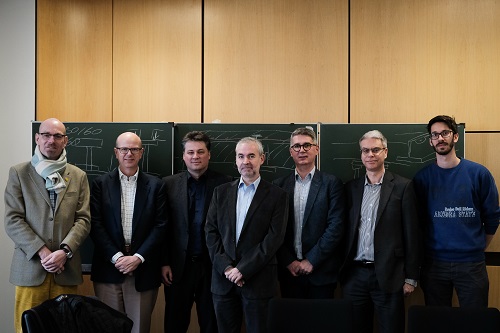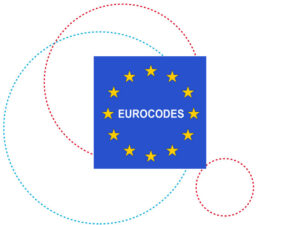Three engineers from the University of Luxembourg have been selected by the European Committee for Standardisation (CEN) to actively participate in the development of the revised second generation of Eurocodes which provide a European harmonised approach in the building sector.
The Eurocodes “EN 1990 – EN 1999” provide a European harmonised approach for the design of buildings, civil engineering works and construction products. Since July 2012, they are mandatory for the specification of European public works and are highly recommended for the private sector as well. In this context, each national standard body had to remove all conflicting national standards and define national annexes for safety issues. In 2012, the European Committee for Standardisation (CEN) received from the European Commission a new mandate to amend existing Eurocodes and extend the scope of structural Eurocodes. This work includes the development of a new structural Eurocode on glass and the revisions of existing codes in order to facilitate their use and reduce the number of national parameters.

Picture taken during the last SC4.T3/T5 meeting chaired by Christoph Odenbreit and Matthias Braun with European partners on 5-6 March 2018 in luxembourg
Professors Christoph Odenbreit and Markus Schäfer as well as Research Associate Matthias Braun have been selected to work on the Eurocode 4 dedicated to composite steel and concrete structures. They explain the high responsibilities and benefits of such involvement: “By being at the heart of the process, we are commissioned to validate the latest international research results, to develop new guidelines and review every detail of the existing code. Thus, we have the chance to improve the code based on our own research results from the University of Luxembourg, to influence the decisions and raise our voice. This is a powerful tool not only to value our research activities but also to promote Luxembourg as a key player in the building sector. Moreover, we learn from other participants who have different cultures and opinions, this is a rewarding experience!”
In addition, by participating in such working groups, they can transfer the latest developments and technologies to their students: “Indeed, we can share and even involve them to define together the future of the building sector. Therefore, our students will be well prepared for entering the job market. This is a valuable asset and increase quality in research and teaching”.
Since their implementation, the benefits of Eurocodes are considerable such as having a uniform level of performance across Europe, facilitating exchange of construction services, cross border trade, increasing trust between suppliers and customers. Besides, many countries in the world have shown interest or have already adopted the Eurocodes. In a nutshell, these standards enhance the competitiveness of building companies at both European and international levels.
58 different parts of the structural Eurocodes have been generated, providing rules for basis of design, actions on structures as well as structural design rules for the use of all major construction materials such as concrete, steel, timber, masonry and aluminium. They are distributed among the following list:
- Eurocode 0: Basis of structural design (EN 1990)
- Eurocode 1: Actions on structures (EN 1991)
- Eurocode 2: Design of concrete structures (EN 1992)
- Eurocode 3: Design of steel structures (EN 1993)
- Eurocode 4: Design of composite steel and concrete structures (EN 1994)
- Eurocode 5: Design of timber structures (EN 1995)
- Eurocode 6: Design of masonry structures (EN 1996)
- Eurocode 7: Geotechnical design (EN 1997)
- Eurocode 8: Design of structures for earthquake resistance (EN 1998)
- Eurocode 9: Design of aluminium structures (EN 1999)
More information: http://eurocodes.jrc.ec.europa.eu
